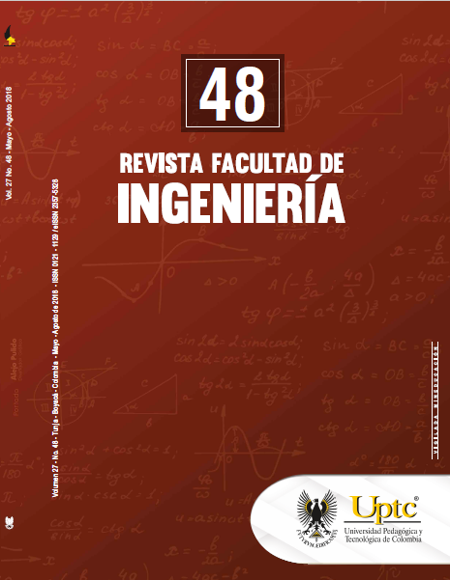Elaboración de scaffolds de dióxido de titanio para aplicaciones médicas

Resumen
El sistema esquelético es vulnerable a lesiones y a perder hueso a lo largo de los años, lo que hace necesario el uso de implantes autólogos o alogénicos; sin embargo, estos implantes tienen complicaciones, como la cantidad limitada de hueso que se extrae y la muerte celular en el sitio de extracción; por lo tanto, se han desarrollado biomateriales como plataformas para el crecimiento celular (scaffolds). Los biomateriales tienen propiedades similares a las del hueso, lo que facilita su integración con el tejido óseo, ayudando a la regeneración de este. Tradicionales los implantes de cerámica son de hidroxiapatitas, pero, debido a sus pobres propiedades mecánicas, han sido reemplazados por cerámicas inertes, que tienen mejores propiedades mecánicas. Por lo tanto, el objetivo de este estudio fue fabricar scaffolds de dióxido de titanio, por medio de diferentes técnicas, utilizando colágeno, polivinil alcohol (PVA), cloruro de sodio y harina de maíz como aglutinante para influenciar el tamaño del poro. Los scaffolds se caracterizaron por medio de microscopía electrónica de barrido (SEM) y se evaluaron con pruebas de compresión y degradabilidad en un fluido corporal simulado (SBF). Los scaffolds elaborados presentaron comportamientos mecánicos que están entre el rango normal del hueso; el scaffold obtenido por medio de infiltración, con 10 % de PVA, presentó valores de fuerza de compresión (6.75 MPa), módulos elásticos (0.23 GPa) y porosidad (54-67 %) cercanos a aquellos reportados para el hueso trabecular.Palabras clave
infiltración, moldeo por compresión, liofilización, scaffolds
Citas
- A. L. Pérez, V. V. Ortega, L. Meseguer, M. A. Baños, P. Sepúlveda, and M. C. Sanz, “Implante óseo de la espuma de hidroxiapatita. Estudio experimental en conejos,” Rev Esp. Patol., vol. 38 (2), pp. 14-20, Jan. 2005.
- J. Park, and R. Lakes, Biomaterials: An Introduction. 3ra ed. USA: Springer, 2007.
- J. I. González, D. M. Escobar, and C. P. Ossa, “Influence of the Type of Manufacturing Technique on the Porosity and Interconnectivity of Hydroxyapatite Scaffolds,” Int. J. of Mat. Eng. Innovation, vol. 7 (2), pp. 104-114, Dec. 2016. DOI: http://doi.org/10.1504/IJMATEI.2016.079554. DOI: https://doi.org/10.1504/IJMATEI.2016.079554
- J. Liu, and X. Miao, “Porous alumina ceramics prepared by slurry infiltration of expanded polystyrene beads,” J. of Mat Sc., vol. 40 (23), pp. 6145-6150, Dec. 2005. DOI: http://doi.org/10.1007/s10853-005-3165-3. DOI: https://doi.org/10.1007/s10853-005-3165-3
- T. Yang, J. M. Lee, S. Y. Yoon, and H. C. Park, “Hydroxyapatite scaffolds processed using a TBA-based freeze-gel casting/polymer sponge technique,” J. Mater Sci. Mater. Med., vol. 21 (5), pp. 1495-1502, May. 2010. DOI: http://doi.org/10.1007/s10856-010-4000-1. DOI: https://doi.org/10.1007/s10856-010-4000-1
- H. R. Ramay, and M. Zhang, “Preparation of porous hydroxyapatite scaffolds by combination of the gel-casting and polymer sponge methods,” Biomaterials, vol. 24 (19), pp. 3293-3302, Aug. 2003. DOI: http://doi.org/10.1016/S0142-9612(03)00171-6. DOI: https://doi.org/10.1016/S0142-9612(03)00171-6
- E. Saiz, L. Gremillard, G. Menendez, K. Miranda, P. Gryn, and A. P. Tomsia, “Preparation of porous hydroxyapatite scaffolds,” Mat. Sc. and Eng: C, vol. 27 (3), pp. 546-555, Apr. 2007. DOI: http://doi.org/10.1016/j.msec.2006.05.038. DOI: https://doi.org/10.1016/j.msec.2006.05.038
- S. Deville, E. Saiz, and A. P. Tomsia, “Freeze casting of hydroxyapatite scaffolds for bone tissue engineering,” Biomaterials, vol. 27 (32), pp. 5480-5489. Nov. 2006. DOI: http://doi.org/10.1016/j.biomaterials.2006.06.028. DOI: https://doi.org/10.1016/j.biomaterials.2006.06.028
- J. I. González, D. M Escobar, and C. P. Ossa, “Métodos de fabricación de cuerpos porosos de hidroxiapatita, revisión del estado del arte,” Rev. ION, vol. 27 (2), pp. 55-70. Dec. 2014.
- J. I. González, D. M. Escobar, and C. P Ossa, “Porous bodies of hydroxyapatite produced by a combination of the gel-casting and polymer sponge methods,” J. of Adv Res, vol. 7 (2), pp. 297-304, Mar. 2016. DOI: http://doi.org/10.1016/j.jare.2015.06.006. DOI: https://doi.org/10.1016/j.jare.2015.06.006
Descargas
Los datos de descargas todavía no están disponibles.